Key Facts
- Entry tickets: ₹ 25/- for Indian Nationals. Children below 15 years are provided free entry
- BIMSTEC/SAARC Citizen: ₹25/- per adult
- Foreign nationals: ₹300/- per Adult
- Duration: 1 hour 3 minutes
- Places to cover: The Aga Khan Palace that houses a museum, Kasturba Gandhi Smarak and the beautiful landscaped garden
- Well maintained public toilets are available on the back side of the Palace
- Best Time to visit: All the year round, though Oct- Feb is pleasant to walk around the Sun in the open
- Pune is well connected by Road, rail and Air and is one of the prominent city of the State of Maharashtra, India
In my mind, the Aga Khan Palace should be visited by every Indian citizen to learn about the lesser-known facts of our struggle for Indian independence. I was mortified by my ignorance that it was declared a National monument on 3rd March 2003. Do we even have a list of such documents? Thankfully, you don’t have to research as I found it for you: National Monuments of India
The Aga Khan Palace is spread over 19 acres of land and at present time maintained with a lot of precision and care. As I drove through the inconspicuous gate in complete contrast to the image of a Palace gate my heart skipped a bit fearing the worst. The huge parking space provided my rational mind with reinforcement that the Palace does get huge footfalls.
I sauntered towards the ticket counter holding the hand of my 11-year-old daughter( Asmi), whom I persuaded to visit with me. The sheer joy of visiting a new place during the pandemic made her agree to the proposition, oblivious of my real intention. I was praying in my mind that things should go as per plan and she doesn’t despise me late on!
The tickets can be purchased by scanning a QR code or through a ticket counter by paying through a Cash or Credit/Debit card. I tried to pay through the QR code but it did not go through. Thus, reluctantly I walked to the vacant counter and procured my ticket.
As we crossed the checking gate, slowly the magnificent Aga Khan Palace came alive in front of the eyes. The Palace is quite small compared to the Palaces in this country, yet it catches the attention due to its simplicity and elegance. An Islamic Palace with Italian architecture in the midst of the subcontinent is not something which we envisage of.
The facial expression of Asmi reflected her pleasure from the first glance of the Palace. The Palace is located about 100 metres from the ticket counter. The pathway passes through green landscaped gardens on both sides and gigantic trees planted strategically to provide shades to the tourists.
My real intention in bringing Asmi was to expose her to the Indian independence movement. Both our generations are blessed to be born in a Free Indian democratic state and probably take our independence for granted. We will never understand the real meaning of being a slave in one’s own country.
Independence is no more a challenge in the new world order. Although we still have the old problems of poverty, malnutrition, housing etc. although coming a low way economically. Thus, we need to move faster than our pace of growth and for that to happen, the youngsters need to be driven by nationalism, along with skills.
Unfortunately, skill and history in our academic curriculum are taught with a focus on passing exams. Since I am timid to change the system, I took it upon myself to expose my daughter to our past through this visit. It was my experiment to check if history can be taught without making it boring and abominable. I will let my readers decide if I fared well in this endeavour?
Before I regale Asmi with the history I comforted her by taking a few pictures in the beautiful garden.
Then I abruptly asked her, ” Do you think ₹12 Lacs is a lot of money?”
Asmi: ” Oh yes, it is, but why do you ask?”
Me: “This palace was built in the 19th century with that much money, which in today’s terms can be anything between 5-10K Crores
Asmi: “What? Wow, so much money? Who had some much money”?
Me: “This palace was built in 1892 by the 3rd Aga Khan ( Sultan Md. Shah Aga Khan) and took about 5 years to complete. He was the 48th Spiritual head of the Khoja Ismail religion. Do you know why he built this”?
Asmi: “He needed a place to stay”?
I laughed out loud at her innocence, and continued: “The country was struck by famine He constructed this palace to provide employment to over 1000 locals from the neighbouring villages so that they can earn their livelihood”.
Asmi was clearly taken aback by this act of generosity and said, “Wish all rich people have such noble intentions”! Very deep thought for an 11-year-old
Me: “As we will enter this palace you will find 6 Galleries and each of the Galleries will enlighten us about how our countrymen fought and struggled to get us independence. Many were not fortunate to be alive till independence but their sacrifices helped the future generation to live their dreams. So I want you to read and enlighten your old man about the Galleries? Is that a deal”?
Asmi: “Done- Deal. Sure, why not?”
By this time we reached the entrance of the palace building. The stairs at the entrance are made of beautiful white marbles with dots of black. It was so neat and clean that unconsciously I looked around for instructions to remove our footwear. Thankfully, there was none and we strode forward like Royals entering the palace, head held high!
The first room is called Gallery 1. On entry, I was welcomed by a magnificent life-size statue of Bapu sitting on a wooden plank with a microphone in front and vacant seats for his followers to listen to him. As I was marvelling at the statute Asmi came running towards me and asked: ” There are so many posters explaining that the failure of Cripps mission lead to Quit India Movement in 1942. But what was Cripps mission”?
Me: “In March 1942 the British govt sent senior minister Sir Stafford Cripps to negotiate with Indian National Congress, Gandhi Ji and Jinnah for full Indian cooperation and support in World War II. In Exchange, the British promised to hand over a Dominion status to India when the war is over. This was outrightly rejected by the Indian National Congress and demanded nothing less than full independence. This led to the failure of the mission and named as the Failed Cripp’s mission in the annals of history”.
Asmi: ” What is Dominion status”?
Me: “In simple terms, it meant that we can form a Government of our people but continue to be under the rule of the British crown.
Asmi: “Why did the British want our help in the WW-II”?
Me: ” There were about 2.5 million Indian soldiers in the British Indian army. If they had refused to fight for the British crown then Britain would have lost control over the subcontinent in a matter of days”.
Asmi: “I think Gandhiji did the right thing by launching the Quit India movement on 8th August 1942”
Finishing her statement, she turned around and scampered to Gallery 2 which is also accessible from the inside of Gallery 1. I allowed her to be on her own as every room had a guard keeping her safe from humans and for Covid she is trained to wear her mask properly. In some time I also reached Gallery 2 and found a large size sculpture of Gandhi Ji holding a boy’s hand. A real piece of Art!
Asmi on noticing I have arrived walked up to me and inquired: “Do you know who is Mahadev Desai”?
Me: I am afraid, not much, except that, he was the Secretary of Gandhiji and was imprisoned with Gandhiji in this palace during the Quit India Movement
Asmi: Yes, you are right. The British used this palace to imprison Gandhiji and his key followers in this palace. In fact, Smt Miraben and Smt Prabhadevi Narayan occupied a part of the room between 1942-44. But without Mahadev Desai probably we would have lost all the teaching of Gandhiji”
I looked at her quizzically because this time around it was my moment to learn from my junior.
Asmi continued, ” Mahadev Ji kept a detailed diary ( from 1917 to 1942) writing down the day to day affairs and messages of Gandhiji which was invaluable to historians and importantly allowed us to understand the impact of him on our nation.
She paused for a couple of seconds and then with a heavy tone remarked, ” Unfortunately, he passed away in 1942, 6 days after he was imprisoned here in the Aga Khan Palace”.
With this new knowledge, I went about picking up as much information about Mahadev Ji as possible. I almost lost sense of time and was brought back to reality by a gentle tap on my arm. It was Asmi grinning at me and gesticulating to my watch; a clear message to speed up!
She had finished her tour of Gallery 3 and was impatiently waiting to download new information to me. I requested for 5 mins to click a few pictures and join her. At that time my eyes fell on a Pre independence Monochrome Portrait of the Aga Khan Palace and I clicked it knowing that it would be the apt display picture for this blog.
As soon as I entered Gallery 3, my little guide standing cross-armed started her lecture in almost a breath.
Asmi: ” Can you imagine that Sarojini Naidu was imprisoned in this room”? Without waiting for my answer she continued. “However the British were forced to release her in 1943 due to her failing health and thankfully she lived long enough to witness an Independent India”.
Her enthusiasm to read from the excerpts made me proud and gave me confidence that my mission is going to be a grand success. Like every other Gallery in the Museum, Gallery 3 also had real life-size sculpture. But in this case, there are sculptures of Indian men and women marching on the street demanding Azadi( independence).
We walked around the statues appreciating the great skill manship of the artist in crafting strong emotions on the faces of the models. The above picture will probably demonstrate to my readers that this claim was without any predilection on my part.
The audio of a radio message playing in the Gallery kindled my imaginations to take wings and I briefly saw myself walking with a group of Bengali Bhadralok in the streets of Kolkata. The flashback vanished in seconds and my eyes caught Asmi smiling with an amused look.
Together, we discovered an article of clandestine radio operations, the brainchild of Ram Manohar Lohia and his compatriots. It is no surprise that it was called “Azad Radio” which managed to broadcast to the Indian population without the British intelligence catching a whiff. These days in the pages of history it is called “Congress Radio”, probably to avoid confusion with the “Azad Hind Radio” which was started by Subhash Chandra Bose
Gallery 3 led to Gallery 4 through a small door that leads directly to a sculpture of Gandhi Ji in a sitting posture. This room is much smaller in size but speaks about the 21 days fast to put pressure on the British to stop arresting leaders of Congress discriminately. It is also noteworthy that Mahadev Desai Ji untimely passed away in this room on 15th August 1942.
Gallery 5 was closed for renovation and probably should be a place of pilgrimage for all Indians. Gandhiji and Kasturba Bai was imprisoned here. Unfortunately, on 22nd Feb 1944, on the Mahashivratri day, Kasturba left her mortal remains without being able to witness the Indian independence.
Asmi and I stopped briefly between Gallery 4 and 6 to take a few selfies before resuming our tour. While I was trying to smile at the Selfie camera, Asmi abruptly asked, ” How did Gandhiji manage to fast for 21 days? Can we live for so long without food”?
I smiled at her innocent curiosity and thought of explaining the whole story. Thus, I began my long monologue
“After Gandhiji’s arrest in August 1942, the Indian mass was restless and angry. The non-violence movement of the “Quit India” Protest slowly changed to the ‘Do or Die’ Mantra. Thousands of processions ensued all over the Indian subcontinent, creating panic and law and order concerns for the British Raj. The British Raj banned the Congress Working Committees and declared them illegal.
Gandhiji wrote letters to the Viceroy regarding the massive repression unleashed by the government.
The Viceroy came out with a conspiracy theory of his own and replied: There is evidence that you and your friends expected this policy to lead to violence; and that you were prepared to condone it
Gandhiji regarded the Viceroy’s letter as “an invitation to fast”. Gandhiji observed a 21-days’ fast from 10th February to 2nd March 1943; in protest against Government propaganda that the responsibility for disturbances after the arrest of leaders was that of Congress.
The Government offered to release Gandhiji “for the purpose and for the duration” of the fast. But he refused the offer, explaining that the fast “was not conceived to be taken as a free man” and therefore if he was released, there would be no fast.
Many visitors came to meet Mahatma Gandhi during this epic fast. He said before breaking the 21 day fast, I do not know why Providence has saved me on this occasion. Possibly, it is because He has some more mission for me to fulfil.”
Asmi clapped out loudly and exclaimed, “I never knew he was such a courageous man”.
Me: For your General knowledge let me tell you that Mohandas Karamchand Gandhi took a total of 17 Fasts. Once you go back home you should look it up in Google and help me jog my memory about it.
Asmi: “Sure Dad! Gandhiji is so cool “!
We entered Gallery 6 that was an office during the imprisonment time. As we entered we found another life-size sculpture of Gandhiji sitting at one corner on the floor. A portrait of Kasturba Ji is placed on his left with a flower on the frame signifying her demise. The environment inside is a bit sombre and paying our respects we walked out of the room.
Our Next stop was the Kasturba Gandhi Smarak located about 100 metres from the palace. The Samadhis of both Kasturba Ji and Mahadev Desai Ji was built here by celebrated architect Charles Correa. The earlier version of the Indian national flag was hoisted by Gandhi at this premises on January 26, 1943, and 1944.
Mahatma Gandhi was released before the end of WW II on 6 May 1944 because of his failing health. Some historians suggest that the British Raj did not want him to die in prison and enrage the nation. At a later point after Gandhi’s death, a handful of his ashes were brought to the Aga Khan Palace, and a tomb was constructed in the palace garden.
In the honor of Gandhi and his philosophy, Prince Karim El Husseini (Aga Khan IV), donated the palace to the government of India in 1969. Now the Aga Khan Palace is also known as ‘Gandhi National Memorial’ because of its close association with Mahatma Gandhi.
I am glad we went on this excursion as it added to the father-daughter bonding and importantly made us connect over the same bloodline which flows through our veins- Indianness. I hope you like this article and would share your comments and views about it.
In case you want any information to take up this trip please feel free to shout on journey@metrotter.com


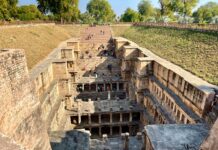


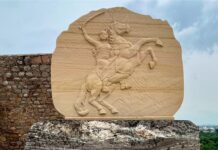
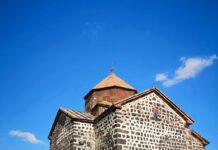

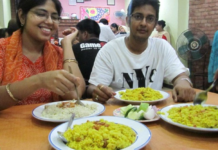
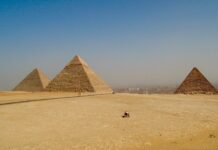

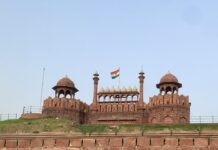
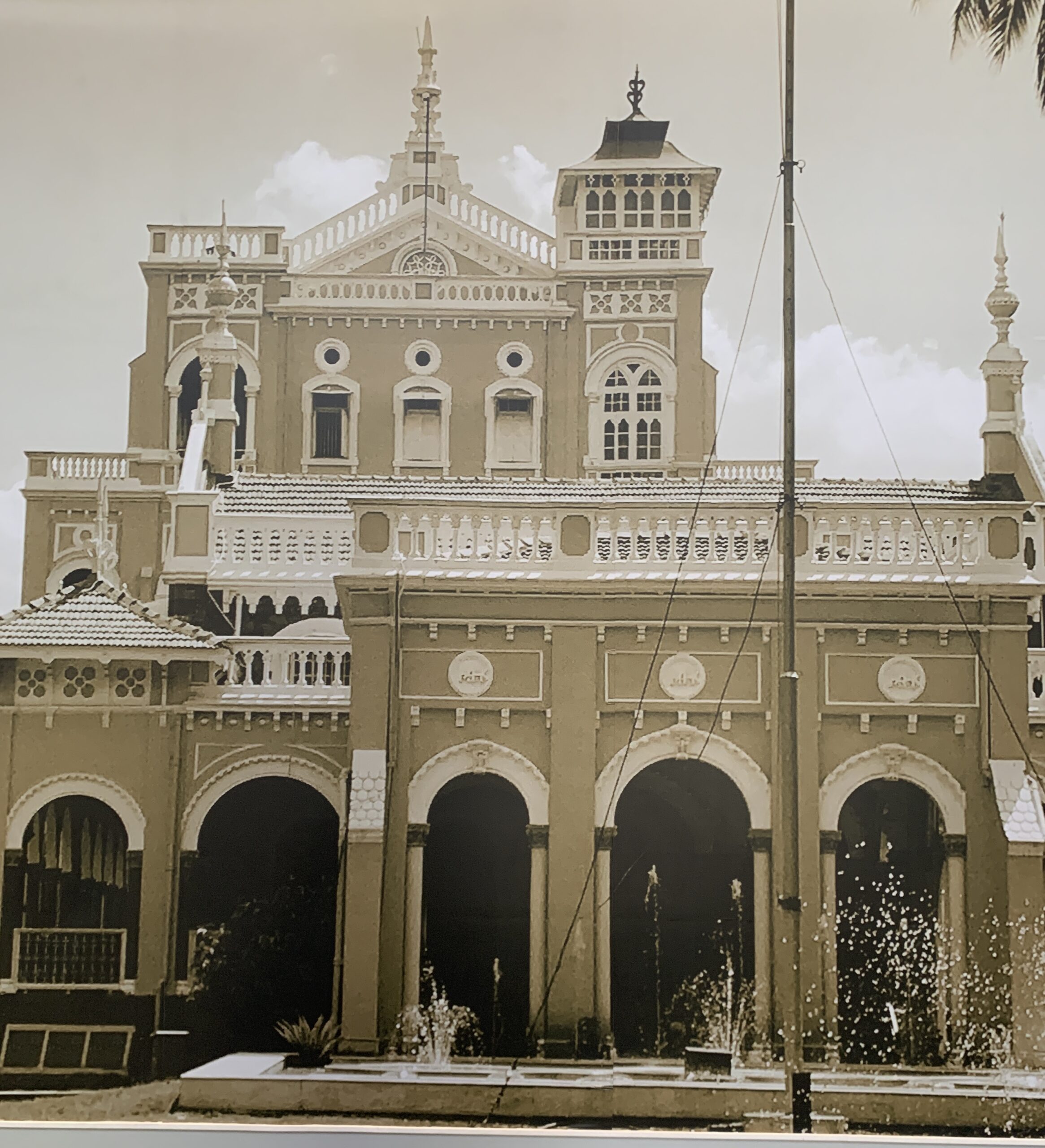




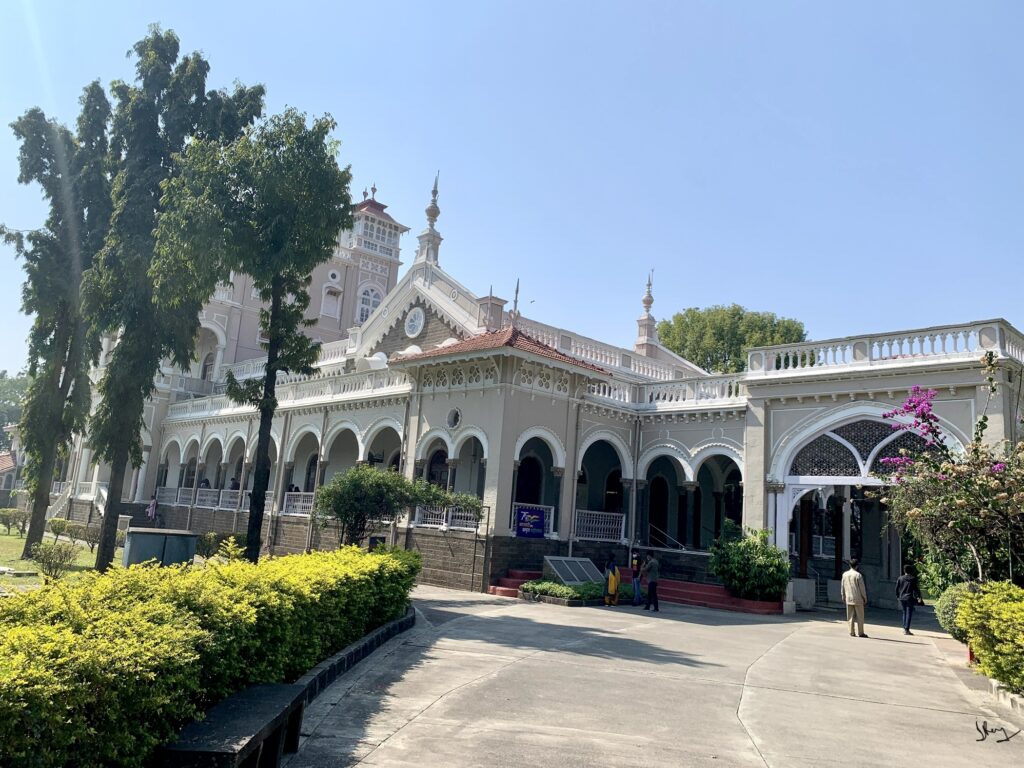
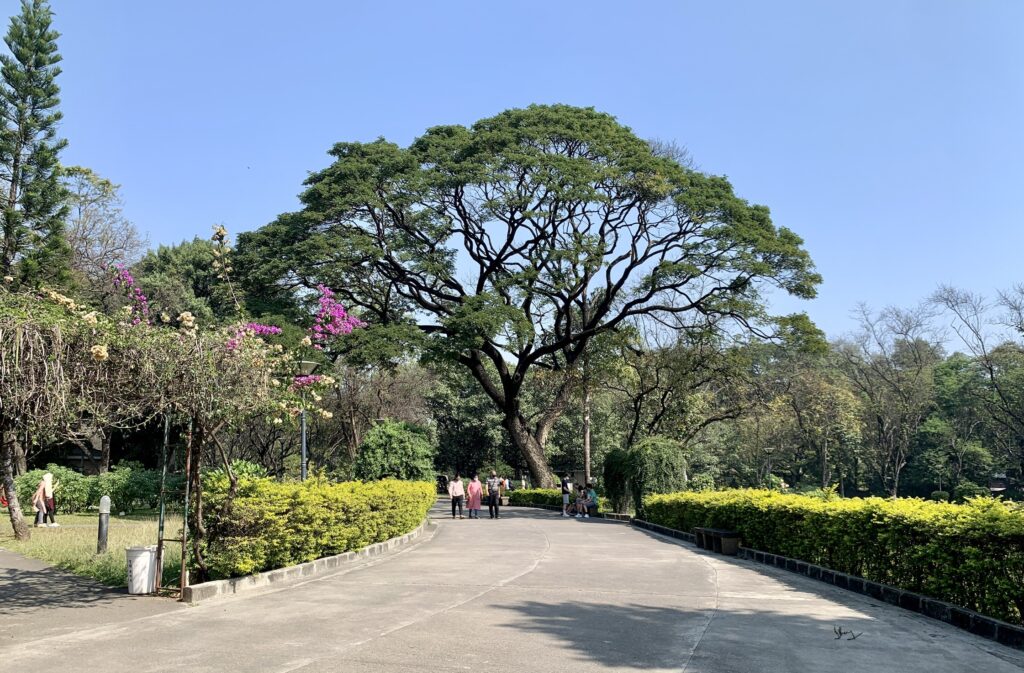

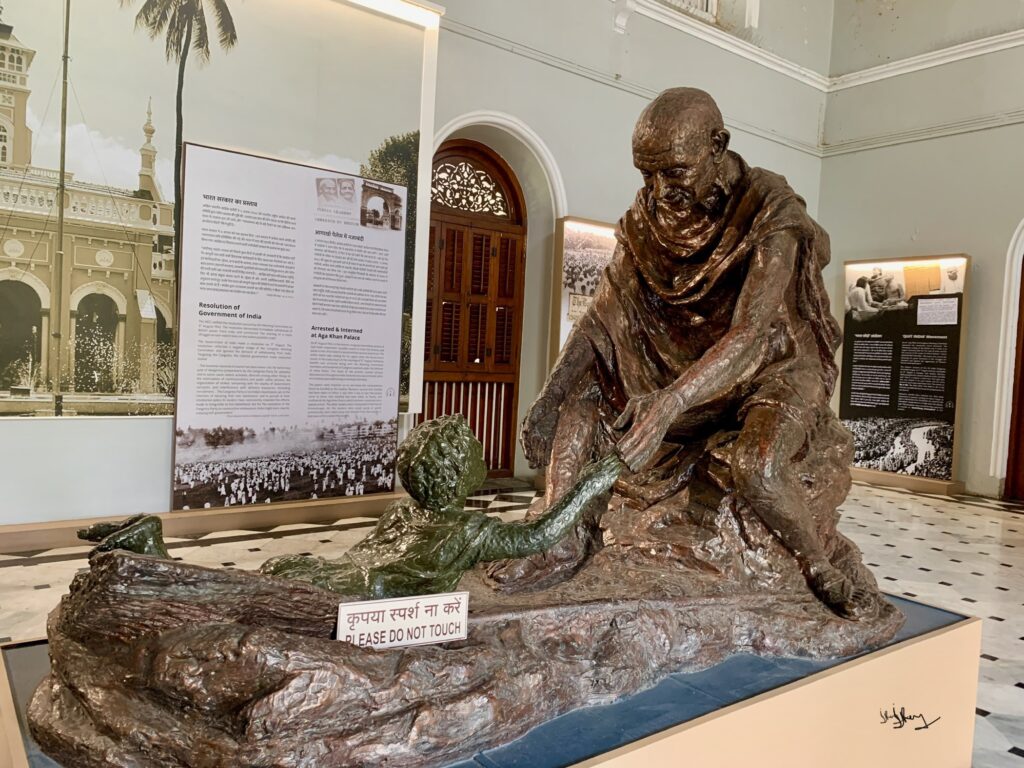



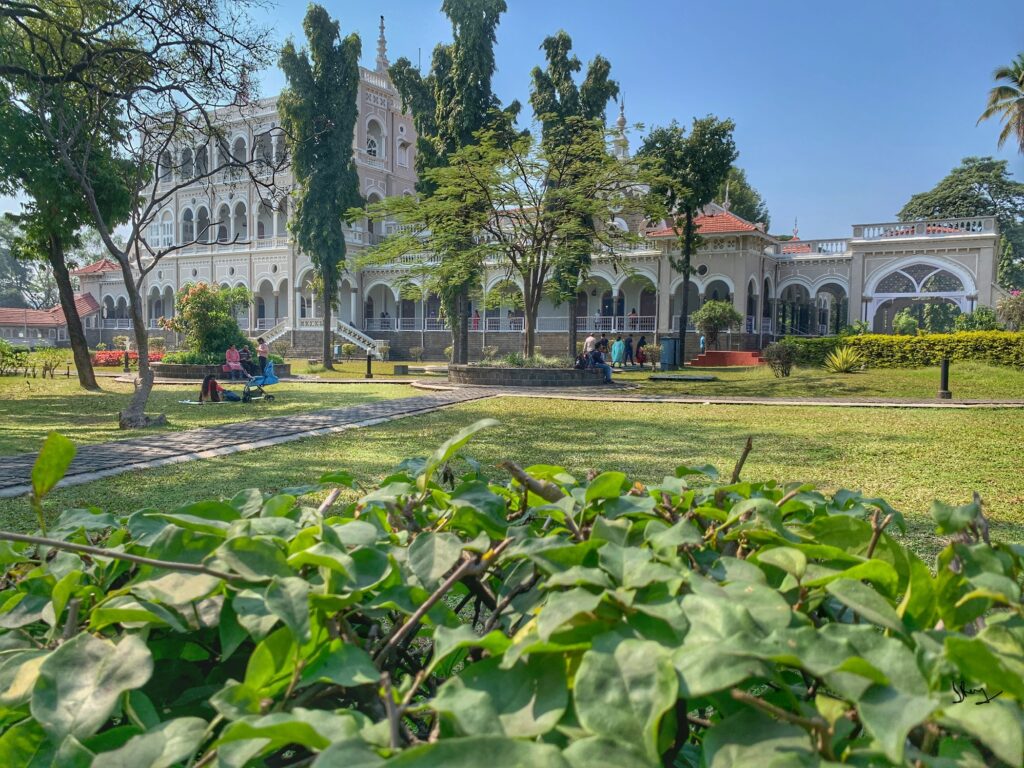
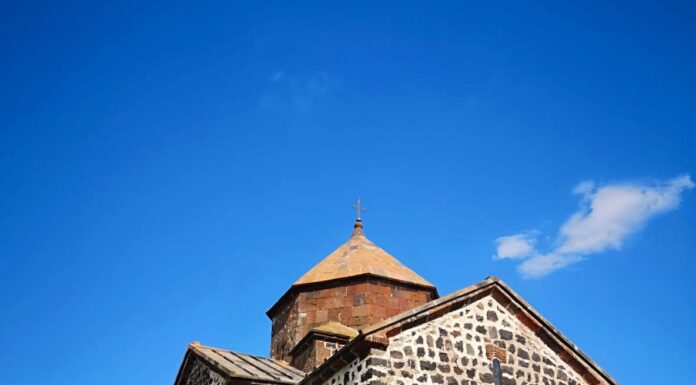






Awesome details given. superb
Thanks for your kind word. Really appreciate
Nice writing style. An interesting way to tell facts.
I am glad you liked it Thakur Saab! Thank you
Great piece. Lovely read.
Thanks, Bandhu. Please share with our young readers
Nice write up!
We have visited the place October 5th.
Thank you Sikha. Hope the blog provided you some guiding light as you went about on your excursions
Comments are closed.